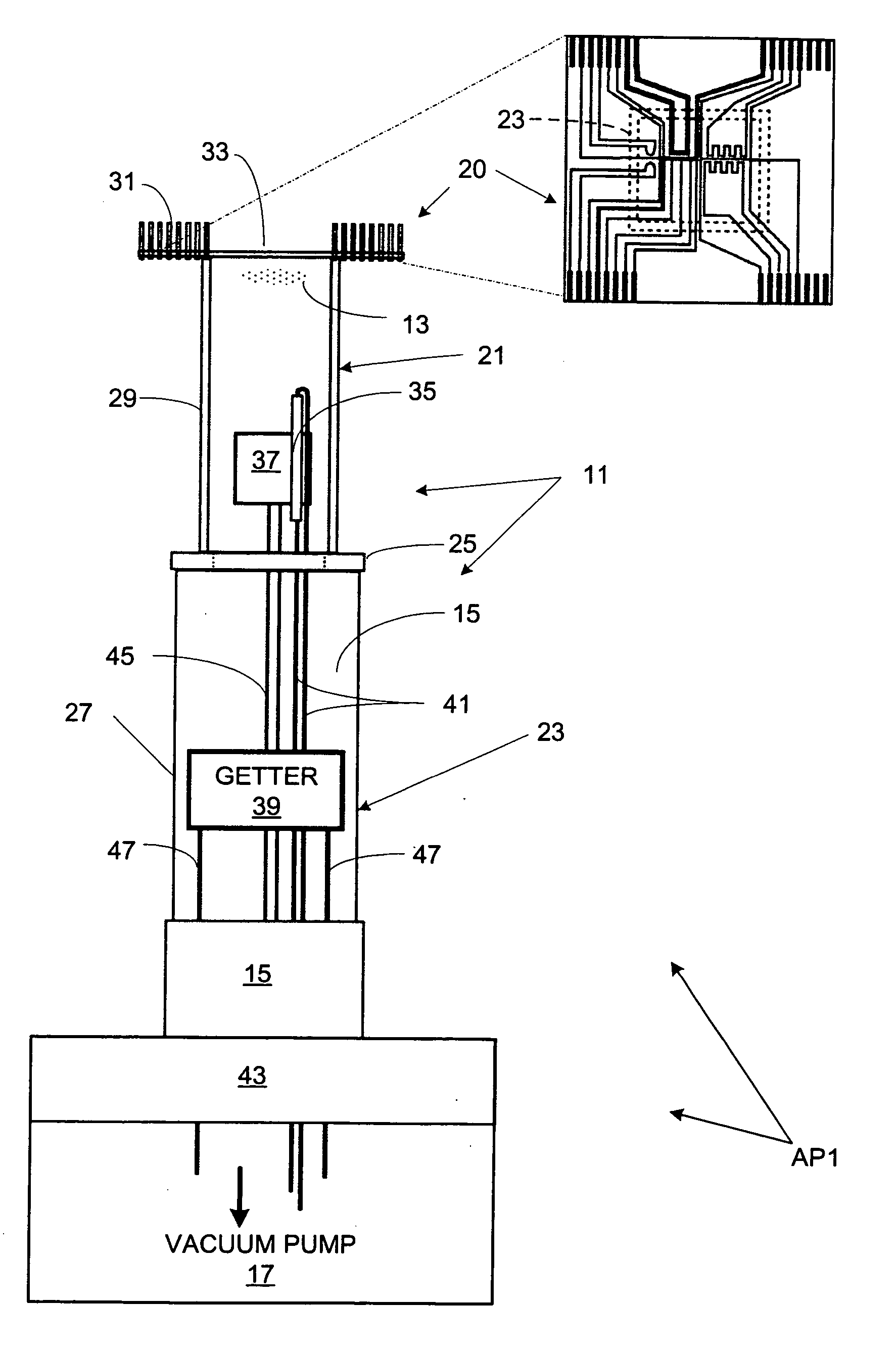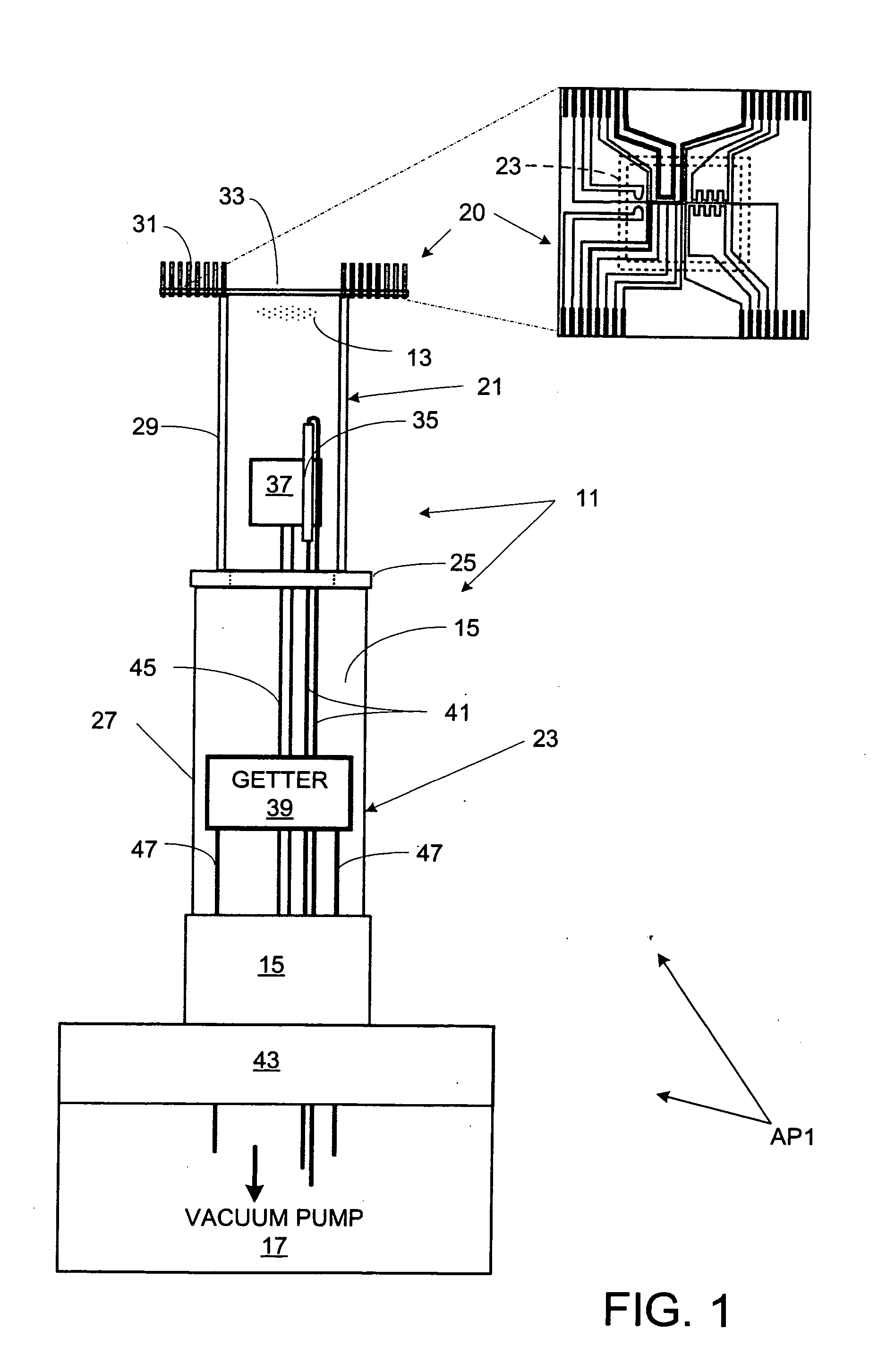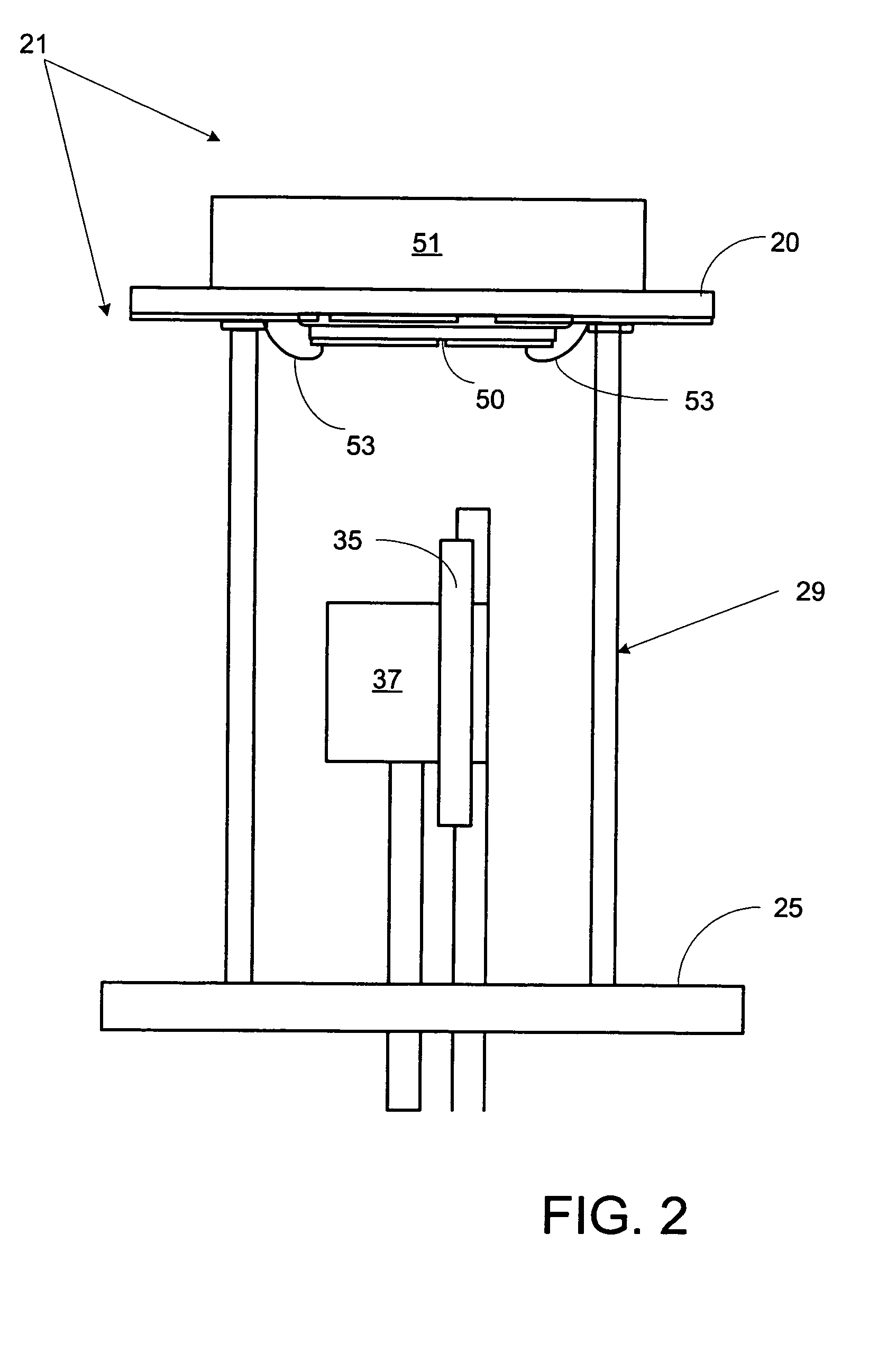Cold atom system with atom chip wall
a technology of atom chips and atom chips, applied in the field of vacuum cells, can solve the problems of inability to achieve large optical access, small size and weight, viewports, etc., and achieve the effect of reducing or eliminating the need for in-vacuum cabling, facilitating vacuum system operation, and facilitating operation
- Summary
- Abstract
- Description
- Claims
- Application Information
AI Technical Summary
Benefits of technology
Problems solved by technology
Method used
Image
Examples
Embodiment Construction
[0023] A cold-atom system API, shown schematically in FIG. 1, includes a novel cold-atom cell 11 (with a Bose-Einstein condensate 13 indicated therein), a glass-to-metal interface 15, and a vacuum pump 17. Cell 11 includes an atom chip 20, a dispenser section 21 and a getter section 23, coupled by a disk 25. Getter section 23 has a cylindrical transparent glass wall 27, while disperser section 21 has four rectangular transparent glass side walls 29 defining a square cross section.
[0024] Atom chip 20 is patterned to define circuits for controlling and sensing atoms in a Bose-Einstein condensate, as shown in the detail of FIG. 1. Atom chip 20 servers as a top wall for dispenser section 21 and cold-atom cell 11, but extends laterally beyond walls 29, indicated in dash in the detail. This allows leads 31 of atom chip 20 to be positioned laterally from dispenser section 21 of atom cell 20, leaving a central area 33 accessible for on-chip active elements. In addition, the lead-free area ...
PUM
 Login to View More
Login to View More Abstract
Description
Claims
Application Information
 Login to View More
Login to View More - R&D
- Intellectual Property
- Life Sciences
- Materials
- Tech Scout
- Unparalleled Data Quality
- Higher Quality Content
- 60% Fewer Hallucinations
Browse by: Latest US Patents, China's latest patents, Technical Efficacy Thesaurus, Application Domain, Technology Topic, Popular Technical Reports.
© 2025 PatSnap. All rights reserved.Legal|Privacy policy|Modern Slavery Act Transparency Statement|Sitemap|About US| Contact US: help@patsnap.com



